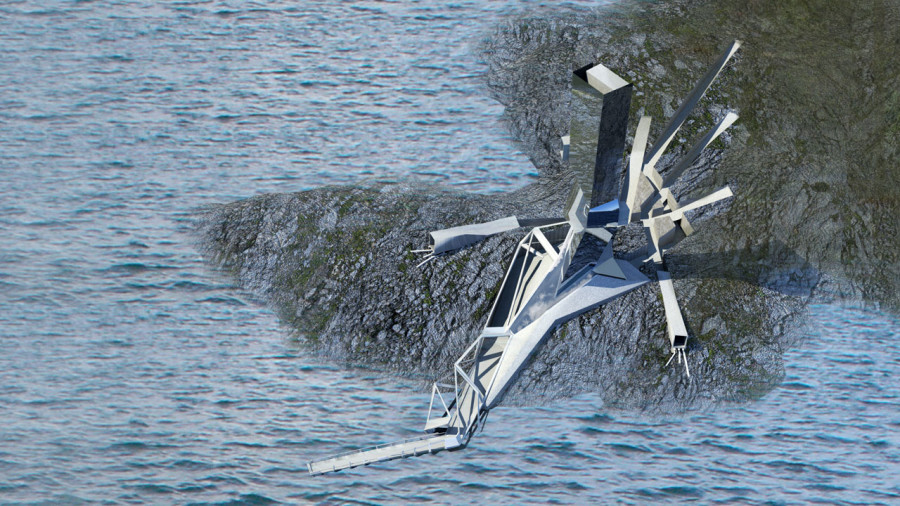CONCORDIA LIGHTHOUSE
Project Date
2015
Project Location
Giglio Island, Italy
Design Team
Brennen Hueller, Nicholas Poulos
Historically, the archetypal lighthouse depicts an inert building or structure that emits light to aid travelers in navigation; its sole purpose being to preserve life. This project challenges this classification and redefines the conventional, singular role of lighthouses through the intercommunication of the form and its environment. Maintaining the original purpose of the lighthouse, this project reflects its ecological context and non-natural circumstances, communicating with and responding comprehensively to its environs in order to enable its detection. Likewise, the form’s interaction with its habitat depicts the passing of time, presence of energy, and the veracity of evolution and distinguishes the structure as one that both creates and sustains life.
At dusk the lighthouse reverses its daytime objective, to disappear, and becomes highly visible from the sea by reflecting a synthetic amalgamation of individual strands of Light Emitting Diodes (LEDs). These strands extend from the termination point of the submerged form and are powered by underwater turbines located at the end of the strands. The field of subaquatic LEDs displays the immersed scaffolding system, which, in time, will attract and blend with bioluminescent marine life, harmoniously combining the natural world with anthropological technology.
By reflecting both its natural and synthetic environments, [DIS]APPEAR responds to its surrounding elements to facilitate discovery as well as communicate time, energy, evolution, and potential hazards, subsequently redefining the prototypical lighthouse—traditionally a static, non-interactive structure—as a dynamic device that both creates and sustains life.

